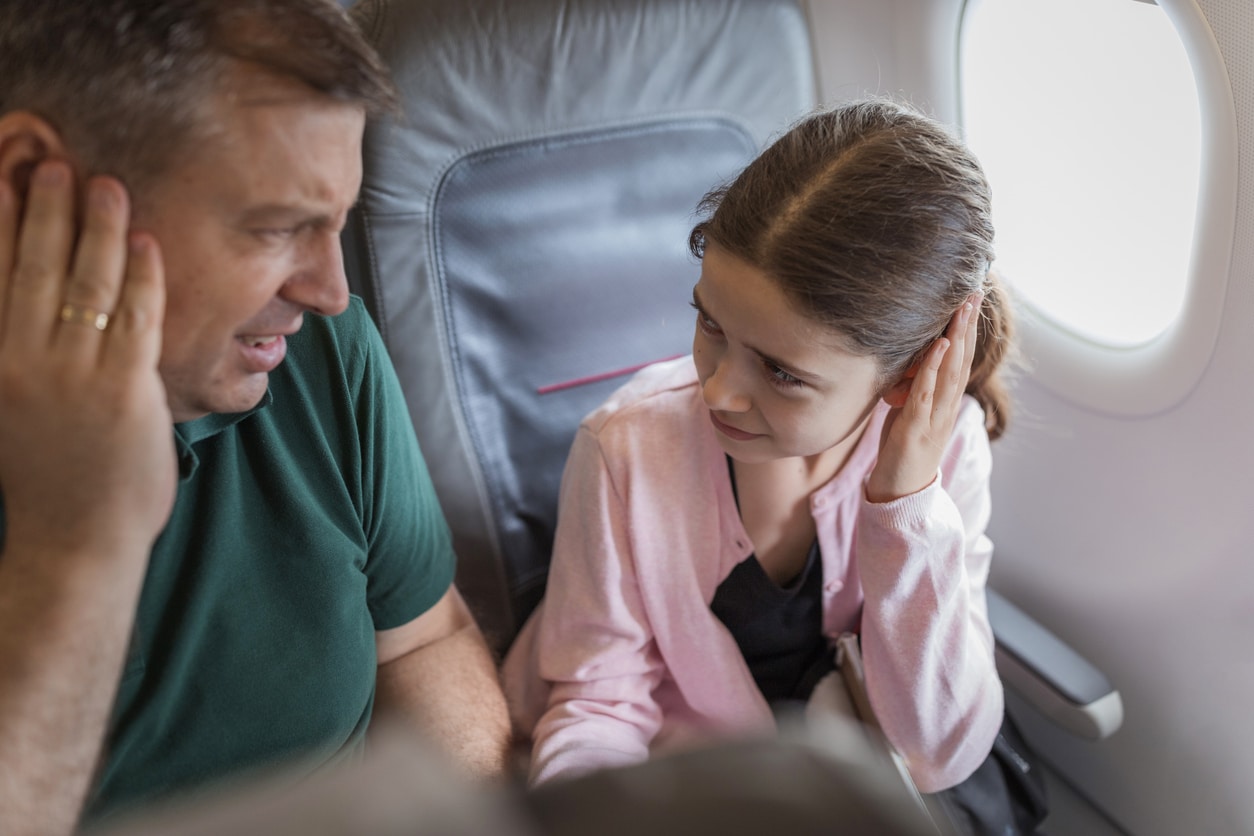When you board a flight at Jack Brooks Regional Airport, you check to make sure your passport is handy, you have a handy neck pillow, and your in-flight entertainment is within reach, whether that be a crime thriller you picked up at the gift shop or a movie you’ve preloaded onto your phone.
Some frequent flyers have one more step to consider: managing ear pressure during flight.
How Does Ear Pressure Change During Flight?

Your ears have small canals called Eustachian tubes that connect the middle ear to the back of the throat. The Eustachian tubes equalize pressure and drain fluid from the ear to keep you comfortable and hearing clearly. Unfortunately, rapid pressure changes, like during takeoff or landing, can prevent the tubes from doing their jobs effectively, causing ear barotrauma or airplane ear.
The result is uncomfortable pressure or a feeling of fullness. The Eustachian tubes will usually equalize within a few minutes or hours, causing a popping sound.
Who Is at Risk for Ear Barotrauma?
Anyone can develop ear barotrauma, but you may be at a greater risk if something like allergies or a sinus infection leaves you congested.
How Can I Fix Ear Barotrauma?
If your ear pressure doesn’t equalize on its own, there are a few ways you can encourage the Eustachian tubes to open:
- Swallow or yawn during takeoff or landing
- Chew gum or suck on a hard candy
- Gently hold your nostrils closed and push air into them as if you’re blowing into a tissue
- Open your mouth wide and close it gently
Performing these methods can help equalize pressure in the ears. Doing them during takeoff and landing can help prevent barotrauma from happening in the first place.
If you’re congested from allergies or a sinus infection, consider taking a decongestant before the flight to prevent severe barotrauma.
Is Ear Barotrauma Dangerous?
Ear barotrauma is rarely dangerous, but severe cases can rupture the eardrum. If you have severe pain or your barotrauma doesn’t go away for a few days, schedule an appointment with one of our specialists at Southeast Texas Ear, Nose & Throat, LLP.